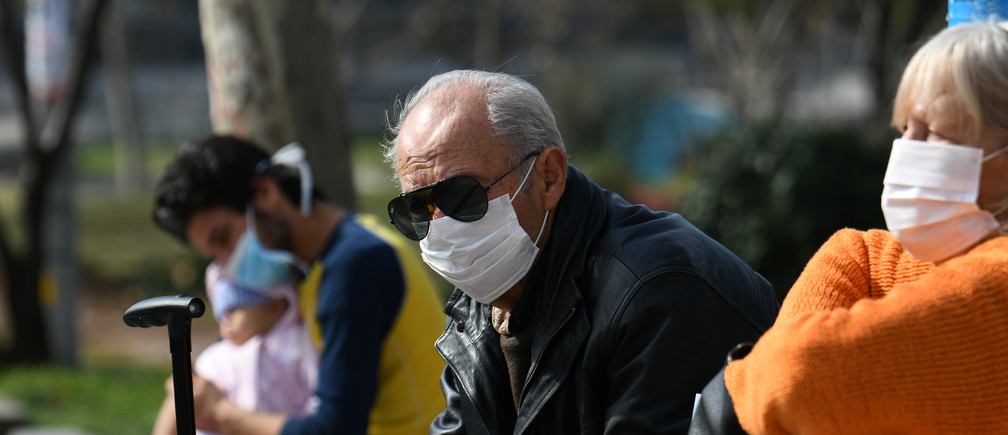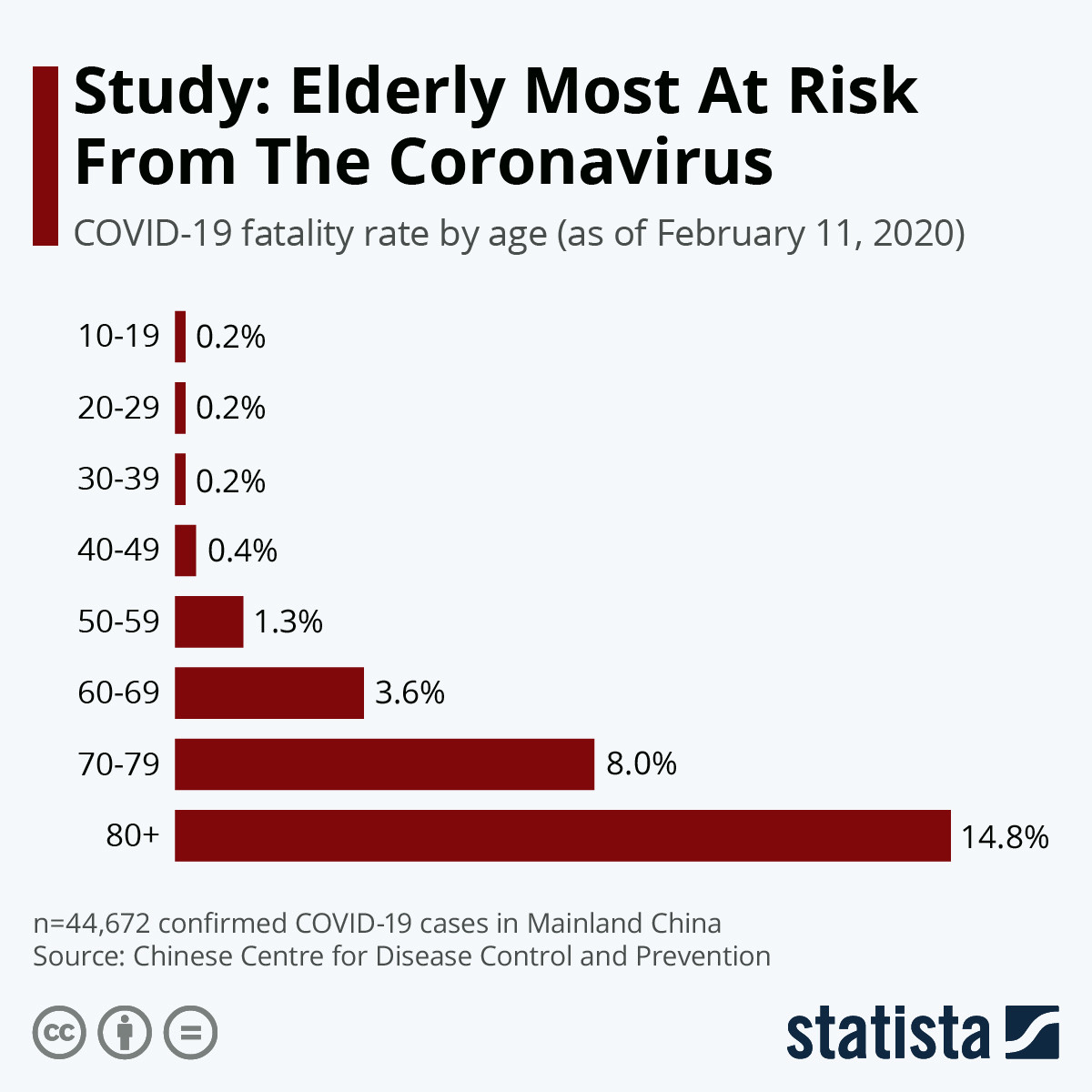How the fatality rate of Coronavirus changes with age

The risks rise dramatically for those over the age of 80. Image: REUTS/Alexandros Avramidis
- Officials in China have released a major report into fatality rates for the Coronavirus.
- The average fatality rate is 2.3%, but it changes significantly with age - rising to nearly 15% among those over 80 years old.
Health officials in China have released their first major report about the coronavirus which has now been officially named COVID-19. The Chinese Center for Disease Control and Prevention compiled the paper which was based on 72,314 patient records and 44,672 confirmed cases of the coronavirus in Mainland China as of February 11, 2020. Out of the total number of confirmed cases, 1,023 deaths were recorded, equating to a case fatality rate of 2.3 percent.
The paper found that the fatality rate gradually increases with age. For example, there were no deaths among children aged nine or younger while it stood at 0.2 percent for people aged between 10 and 39. It increased to 3.6 percent in the 60-69 age bracket before rising to 8 percent among those aged 70 to 79 and 14.8 percent among people in their 80s or older.
People with existing illnesses are also at higher risk and the paper states that sufferers with cardiovascular disease, diabetes, hypertension and chronic respiratory disease all experienced a higher than average fatality rate. Another conclusion is that more men are dying more than women with the male fatality rate 2.8 percent compared to 1.7 percent for females.
Don't miss any update on this topic
Create a free account and access your personalized content collection with our latest publications and analyses.
License and Republishing
World Economic Forum articles may be republished in accordance with the Creative Commons Attribution-NonCommercial-NoDerivatives 4.0 International Public License, and in accordance with our Terms of Use.
The views expressed in this article are those of the author alone and not the World Economic Forum.
Stay up to date:
COVID-19
Forum Stories newsletter
Bringing you weekly curated insights and analysis on the global issues that matter.
More on Health and Healthcare SystemsSee all
Judith Love
November 18, 2025







